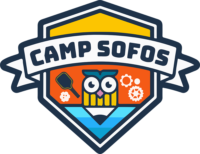Number Sense
- Students understand the relationship between numbers and quantities (i.e., that a set of objects has the same number of objects in different situations regardless of its position or arrangement).
- Students compare two or more sets of objects (up to ten objects in each group) and identify which set is equal to, more than, or less than the other.
- Students count, recognize, represent, name, and order a number of objects (up to 30).
- Students understand and describe simple additions and subtractions.
- Students use estimation strategies in computation and problem solving that involve numbers that use the ones and tens places.
Measurement and Geometry
- Students understand the concept of time and units to measure it; they understand that objects have properties, such as length, weight, and capacity, and that comparisons may be made by referring to those properties.
- Students compare the length, weight, and capacity of objects by making direct comparisons with reference objects (e.g., note which object is shorter, longer, taller, lighter, heavier, or holds more).
- Students demonstrate an understanding of concepts of time (e.g., morning, afternoon, evening, today, yesterday, tomorrow, week, year) and tools that measure time (e.g., clock, calendar). • Students identify common objects in their environment and describe the geometric features.
- Students compare familiar plane and solid objects by common attributes (e.g., position, shape, size, roundness, number of corners).
Algebra and Functions
- Students sort and classify objects
- Students identify, sort, and classify objects by attribute and identify objects that do not belong to a particular group (e.g., all these balls are green, those are red).
Statistics, Data Analysis, and Probability
- Students collect information about objects and events in their environment.
- Students will identify, describe, and extend simple patterns (such as circles or triangles) by referring to their shapes, sizes, or colors.
Reading
Students know about letters, words, and sounds. They apply this knowledge to read simple sentences. They will be able to identify the front cover, back cover, and title page of a book. Follow words from left to right and from top to bottom on the printed page. Understand that printed materials provide information. Recognize that sentences in print are made up of separate words. Distinguish letters from words. Recognize and name all uppercase and lowercase letters of the alphabet. Blend vowel-consonant sounds orally to make words or syllables. Identify and produce rhyming words in response to an oral prompt. Read simple one-syllable and high-frequency words (i.e., sight words). Identify and sort common words in basic categories (e.g., colors, shapes, foods).
Reading Comprehension
Students identify the basic facts and ideas in what they have read, heard, or viewed. They use comprehension strategies (e.g., generating and responding to questions, comparing new information to what is already known). Locate the title, table of contents, name of author, and name of illustrator. Use pictures and context to make predictions about story content. Ask and answer questions about essential elements of a text. Identify characters, settings, and important events.
Writing
Students write words and brief sentences that are legible. Write consonant-vowel-consonant words (i.e., demonstrate the alphabetic principle). Write by moving from left to right and from top to bottom. Write uppercase and lowercase letters of the alphabet independently, attending to the form and proper spacing of the letters. Spell independently by using pre-phonetic knowledge, sounds of the alphabet, and knowledge of letter names.
Listening and Speaking
Students listen and respond to oral communication. They speak in clear and coherent sentences. Understand and follow one- and two-step oral directions. Share information and ideas, speaking audibly in complete, coherent sentences. Describe people, places, things (e.g., size, color, shape), locations, and actions.
Mathematical Reasoning
- Students make decisions about how to set up a problem.
- Students solve problems in reasonable ways and justify their reasoning.
